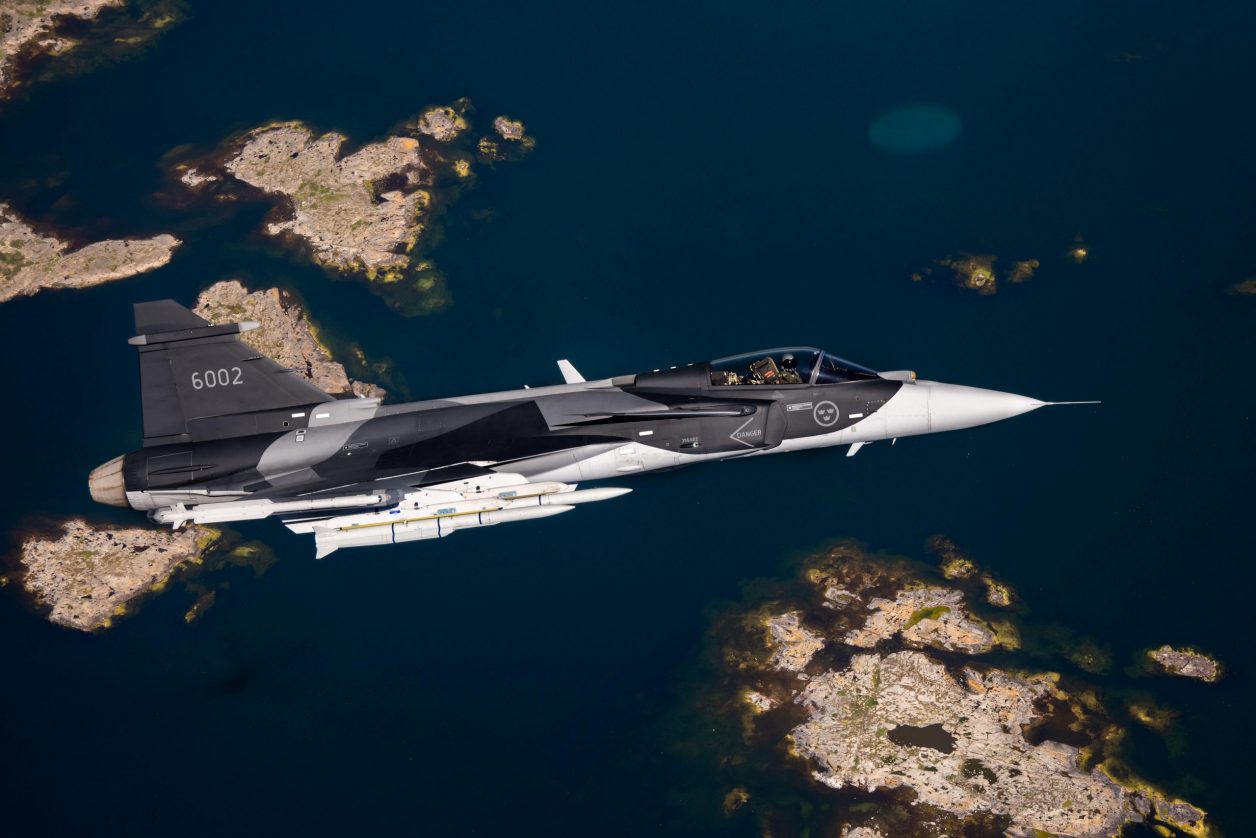Swedish aerospace and defense company Saab which manufactures Gripen fighter jets has inked a major defense deal with the Indian military.
The Saab Gripen is a contender for Indian Air Force’s Multi-Role Fighter Aircraft (MRFA) contract, loosely called MMRCA 2.0, aimed at replacing its aging MiG-21s, Mirage 2000s, and the Jaguars.
Challenging F-22 Raptors, China Plans To Amplify ‘Thrust Vectoring’ Capabilities Of Its J-20 Stealth Fighter Jets
India wants to induct 114 aircraft under the MRFA program to boost its fighter fleet. The IAF currently operates 32 squadrons out of a sanctioned strength of 42.
Saab announced on December 20 that the Indian military has chosen its AT4 anti-armor weapon in a competitive contest for a single-shot weapon. The company has not disclosed the total value of the contract yet.
An agreement was signed in Delhi by its defense and security arm, FFV Ordnance, according to Saab. AT4’s CS AST variant will be delivered to the Indian military. The weapon can be fired from restricted locations like within buildings, bunkers, and other urban areas.
The AT4 CS AST has a tandem warhead with a breach or blast mode that is designed to overcome enemies within buildings and eliminate structures that can be used as a point of entry.
Görgen Johansson, head of Saab’s business area Dynamics, said the company was honored that the Indian armed forces, which already use their Carl-Gustaf system, had selected Saab for their single-shot weapon needs. He further stated that the Indian Army and the Air Force may rest assured that they have the weaponry they need to gain an advantage on the battlefield.

AT4 Anti-Armor Weapon
The manufacturer claims that the AT4 is one of the most popular and successful support weapon families in the market. It is operated by a single soldier. Its single-shot system has proven efficacy against structures, landing craft, helicopters, armored vehicles and personnel. The weapon’s 84 mm caliber warhead offers enhanced power and performance.
The AT4 anti-armor weapon evolved from the Swedish Army’s 74mm Pansarskott M68 weapon, which was introduced in the 1960s. The AT4 was developed by Försvarets Fabriksverk (FFV), which had tested over 100 weapons with the help of the Swedish Army by early 1982.
The AT4 was first used by the US Army in 1982, before being adopted by Sweden. In 1983, the US Army examined six weapons and decided that the FFV AT4 met all the requirements for replacing the M72 LAW weapon. Upon changing the launch tube bumpers, sights, and slings, the US Army deployed AT4 as the lightweight multipurpose weapon M136. The Americanized version was also adopted by the Swedish Army.

During the development of the AT4, Saab Bofors used many Carl Gustav design elements. The AT4 is recoilless and can shoot a great volume of ammunition. The AT4’s range-adjustable plastic sights, which can be hidden beneath the sliding covers, are used to aim at the target. An ‘optical night sight’ is included with the weapon.
The AT4 CS variant was the first launcher to have “confined space” anti-back blast technology, which is now standard on all launchers produced. However, the AT4’s hole and trident sights have been replaced with a simple “fold-out” micro red dot.

Unlike the Carl Gustav M4’s dot sight, the sight is intended to be inexpensive and single-use, as it will be discarded with the launcher. It looks like an Aimpoint red dot sight, with a battery tube parallel to the sight tube and an on/off brightness adjustment switch. This makes the new launcher significantly faster to put into action.
To make the older AT4 ready to fire, the soldier would first open two sliding sight covers to prepare the iron sights, then cock the launcher, pick the correct sight aperture, and then line up the sights to get ready to fire.
The AT4 warhead can pierce armor up to 17.5 inches thick. The weapon has a minimum arming distance of 10 meters, which allows it to be more precise when targeting short-range threats. Even if they are heavily timbered, wooden structures cannot withstand AT4.
AT4 has different projectiles, including HEAT (high-explosive anti-tank), AST (anti-structure tandem-warheads), ER, HE (high explosive), HP, and RS (reduced sensitivity). The launcher is already loaded with projectiles.
The high-explosive anti-tank missile can pierce up to 420mm thick rolled homogeneous armor. The dual-purpose high-explosive projectile can be employed against structures and bunkers, and it can detonate on impact or with a delayed detonation.
- Contact the author at ashishmichel@gmail.com
- Follow EurAsian Times on Google News




